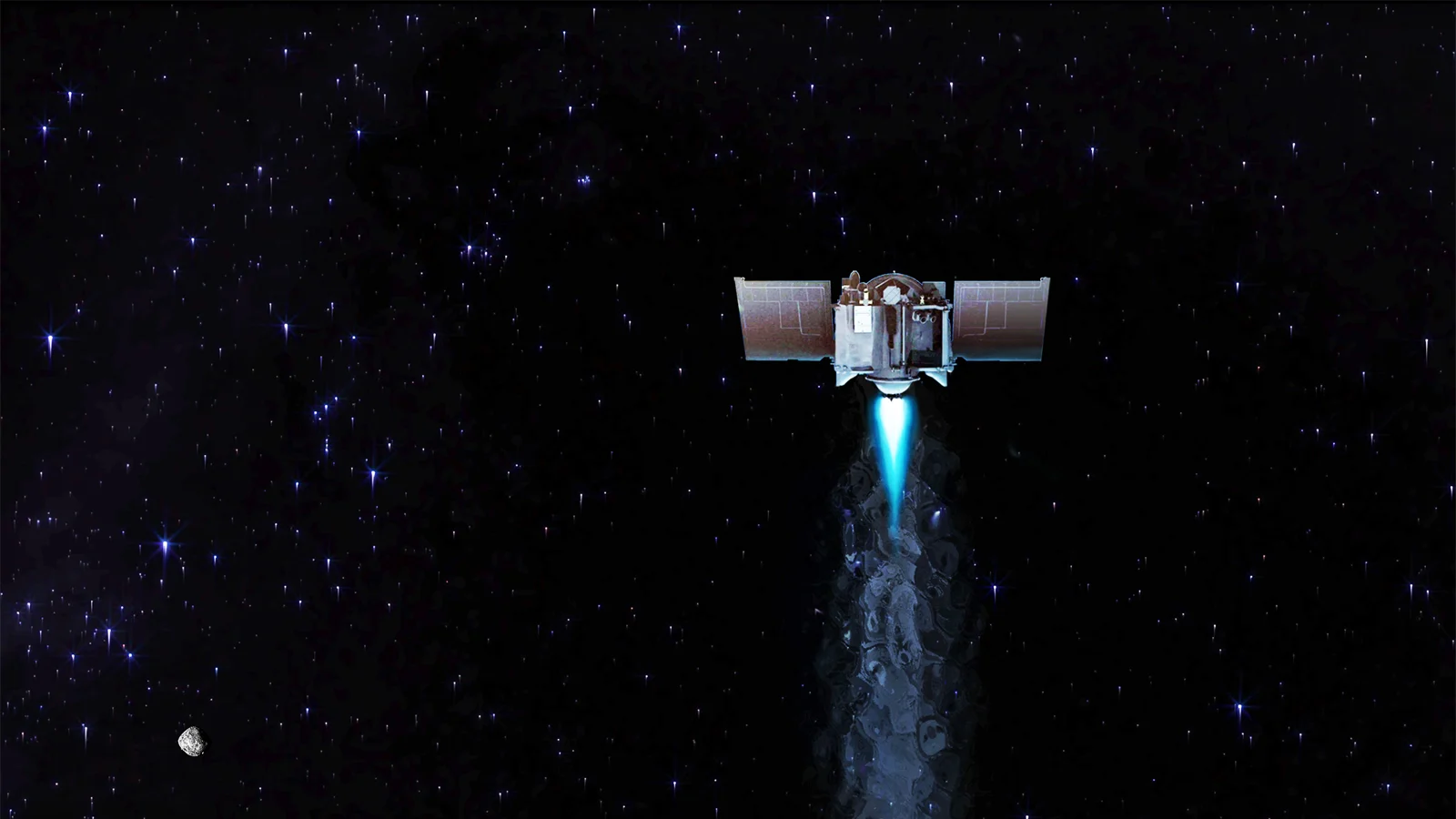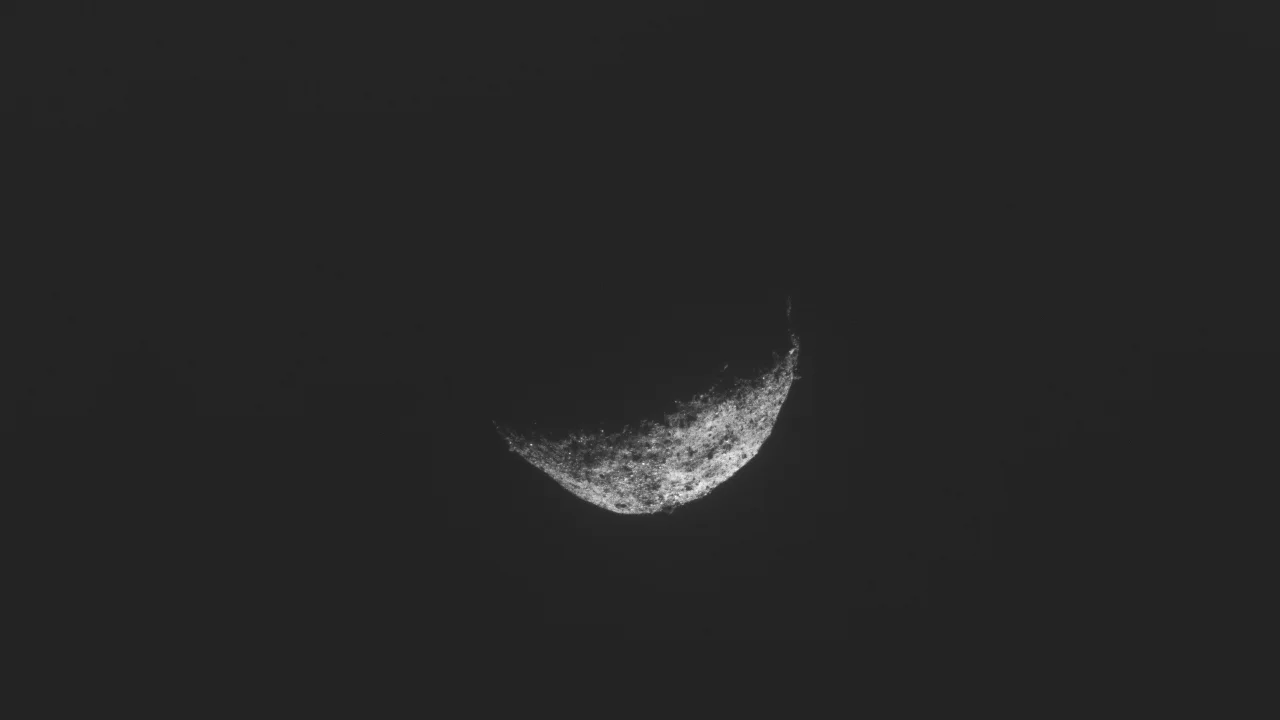
NASA's asteroid-tagging spacecraft has begun its journey home
After 'punching' a sample out of asteroid Bennu last year, OSIRIS-REx has begun its long journey back to Earth.
Millions of kilometres out in space, NASA's OSIRIS-REx spacecraft fired its engines on Monday, propelling it away from asteroid Bennu and onto its path back to Earth. Carried within the probe is precious cargo that scientists here are anxiously looking forward to receiving.
It's been over two years since OSIRIS-REx arrived at its destination and began to explore, map, and catalogue the features of the near-Earth asteroid known as 101955 Bennu. This half-a-kilometre wide object is what's known as a 'rubble pile' asteroid. That is, it is not one solid rock. Instead, it is a collection of boulders, rocks, pebbles and dust, all loosely 'stuck' together by their mutual gravitational pull.

On April 9, 2021, NASA's Origins, Spectral Interpretation, Resource Identification, Security, Regolith Explorer (OSIRIS-REx) spacecraft took one last look at Bennu. This image, the last one taken by the spacecraft, shows crescent Bennu with its night side merging with the complete black of space as the spacecraft pushed away from Bennu. Credit: NASA/Goddard/University of Arizona; Writer Daniel Stolte, University of Arizona
Bennu does not pose any direct threat to Earth, either now or in the future. However, exploring this asteroid is providing scientists with critical information that will help protect us from any asteroids that do become a threat in the future.
Canada played a significant role in this mission. One of the spacecraft's instruments was the OSIRIS-REx Laser Altimeter, or OLA, which was used to precisely scan the surface of Bennu, to generate a detailed 3D map. This not only revealed the roughness of the surface materials and the scale of the various boulders littering the surface, it also helped the mission team choose their sample location.
After mapping the entire surface of the asteroid and making some curious discoveries, in October of 2020, OSIRIS-REx performed a first for a NASA spacecraft. It approached the asteroid and 'tagged' it, using a blast of air to knock a sample off its surface, which it then collected for return to Earth.
Watch below: See OSIRIS-REx blast a sample from asteroid Bennu's surface
After maintaining orbit around Bennu for the past 6 months, which included examining the effects of where it had blasted the surface, OSIRIS-REx is now on its long journey home. Thrusting away from Bennu at around 1,000 kilometres per hour on May 10, 2021, the spacecraft is expected to reach Earth on September 24, 2023.
"There's a lot of emotion within the team about departure," Mike Moreau, OSIRIS-REx deputy project manager at NASA's Goddard Space Flight Center, said in a NASA press release on Monday. "I think everyone has a great sense of accomplishment, because we faced all these daunting tasks and were able to accomplish all the objectives thrown at us. But there's also some nostalgia and disappointment that this part of the mission is coming to an end."
Watch below: NASA reveals how our views of asteroid Bennu evolved over time
Once OSIRIS-REx arrives here, the spacecraft will eject its sample container, which will plunge into our atmosphere for a parachute landing somewhere in the desert of western Utah. After that, the container will be collected and transported to NASA's Johnson Space Center in Texas. Once the sample it holds is removed, it will be sent out to various researchers around the world. The Royal Ontario Museum in Toronto is one of the facilities expected to receive a sample from Bennu for investigation.
"OSIRIS-REx's many accomplishments demonstrated the daring and innovate way in which exploration unfolds in real time," Thomas Zurbuchen, NASA's associate administrator for science, said in the statement. "The team rose to the challenge, and now we have a primordial piece of our solar system headed back to Earth where many generations of researchers can unlock its secrets."










